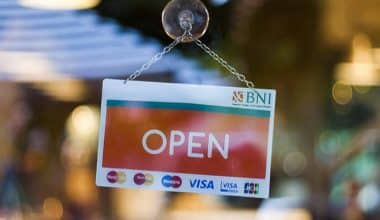Taking out a loan can be a smart way to finance your goals, whether it’s buying a home, starting a business, or paying off debt. However, it’s important to approach the process thoughtfully to ensure you’re making the best decision for your financial situation. In this article, we’ll walk you through the steps of taking out a loan from the bank. We’ll also discuss how to take out a loan on 401k with bad credit or no credit.
How to Take Out a Loan from the Bank
Before we dive into this let’s look at the meaning of a personal loan.
What is a Personal Loan?
A personal loan is a one-time payment that you can obtain from a number of lenders, such as conventional banks, credit unions, and online lenders. The loan is repaid with interest on a set monthly installment schedule. In general, personal loans are unsecured, which means you don’t have to put up any kind of security like a bank account or a car title. A personal loan can be used for almost any objective, including debt consolidation and financing home improvement initiatives. But, some lenders forbid you from using the money to finance assets, real estate, or costs associated with postsecondary education.
When applying for a personal loan, acquire all the paperwork and information you need along the way. By doing this, you’ll be able to complete each stage of the procedure swiftly and receive your funds. Below are steps on how to take out a loan from the bank.
Step 1: Determine your borrowing needs
Before applying for a loan, you need to determine how much money you need to borrow and what the funds will be used for. It’s important to have a clear idea of how much you need to borrow and how you plan to use the funds. This will help you choose the right type of loan and ensure that you can repay the loan on time.
Step 2: Check your credit score
Your credit score will play a major role in whether you’re approved for a loan and what interest rate you’ll be offered. Check your credit score and credit report to ensure they’re accurate and up-to-date. If you have a low credit score, you may need to work on improving it before applying for a loan.
Step 3: Research loan options
Banks offer a variety of loan options, including personal loans, home loans, car loans, and business loans. Research the loan options available at your bank and compare interest rates, fees, and repayment terms. You can also consider using a loan comparison website to help you find the best loan for your needs.
Step 4: Gather documentation
When applying for a loan, you’ll need to provide documentation that shows your income, employment history, and creditworthiness. This may include recent pay stubs, tax returns, bank statements, and other financial records. Gather all the required documentation before applying for a loan to streamline the application process.
Step 5: Apply for the loan
Once you’ve determined your borrowing needs, check your credit score, researched loan options, and gathered all the required documentation, you can apply for the loan. You can usually apply for a loan online, by phone, or in person at a bank branch. Be prepared to provide all the necessary information and documentation.
Step 6: Wait for approval
After you’ve submitted your loan application, you’ll need to wait for the bank to review your application and make a decision. The bank may ask for additional information or documentation during the approval process. Once your loan application is approved, the bank will provide you with the loan terms and conditions, including the interest rate, repayment term, and monthly payment amount.
Step 7: Accept the loan terms and receive the funds
Once you’ve reviewed and accepted the loan terms and conditions, the bank will disburse the funds to your bank account. Make sure you use the funds for the purpose intended and make your payments on time to avoid late fees and damage to your credit score.
How to take out a loan on 401k
Taking out a loan from a 401k can be a way to access funds quickly, but it should only be considered as a last resort, as it can have long-term consequences for your retirement savings. Here are the steps to take out a loan on your 401k:
- Check your plan’s rules: Your 401k plan may have specific rules and restrictions for taking out a loan. Contact your plan administrator or HR representative to find out the rules.
- Determine the amount you can borrow: Most 401k plans allow you to borrow up to 50% of your vested balance, up to a maximum of $50,000.
- Fill out the loan application: You will need to fill out a loan application form provided by your plan administrator. You will need to specify the amount you want to borrow and the repayment terms.
- Wait for approval: Your plan administrator will review your application and approve or deny your request. If approved, you will receive the funds.
- Repay the loan: You will need to repay the loan within five years, with interest. The interest rate is usually based on the prime rate plus one or two percentage points.
It’s important to remember that taking out a loan from your 401k might not be the best option in the long run. It may affect your retirement savings and potentially incur penalties if you are unable to repay the loan. Be sure to consider all other options before taking out a loan on your 401k.
How to take out a loan with bad credit
Getting a loan with bad credit can be challenging, but it’s not impossible. Here are some options to consider:
#1. Consider a co-signer:
If you have a family member or friend with good credit who is willing to co-sign the loan, you may be able to get approved for a loan with better terms and interest rates.
#2. Look for lenders that specialize in bad credit loans:
There are some lenders that specialize in lending to individuals with bad credit. These lenders typically have more flexible lending criteria and may be more willing to work with you.
#3. Consider a secured loan:
A secured loan requires you to put up collateral such as a car or property to secure the loan. Because there is collateral involved, lenders may be more willing to lend to you despite your bad credit.
#4. Improve your credit score:
If you have time before you need to take out a loan, consider taking steps to improve your credit score. This can include paying down debt, making payments on time, and disputing any errors on your credit report.
#5. Consider a payday loan:
Payday loans are typically small, short-term loans that are meant to be repaid quickly. While they can be expensive, they may be an option if you need cash quickly and have no other options. Remember to carefully consider the terms and conditions of any loan you apply for and make sure you understand the fees and interest rates involved before agreeing to any loan.
How to take out a loan with no credit
If you have no credit history, it can be challenging to get approved for a loan since lenders have no way of assessing your creditworthiness. However, here are some options to consider:
#1. Look for lenders that consider other credit histories
There may be other ways to convince a bank that you are a reliable borrower even without a credit score. Other information, such as bank account activity and a borrower’s history of on-time rent, utility, and other bill payments, is sometimes accepted by lenders to evaluate a borrower’s risk.
You might need to speak with a lender directly in order to get approved for a loan utilizing your non-traditional credit history. Finding a bank or credit union with a local branch close to you is preferable so you may speak with a representative in person.
#2. Get a payday alternative loan (PAL) from your credit union
If you belong to a credit union and require immediate cash, you should see if it offers Payday Alternative Loans (PALs). PALs are tiny, brief loans designed to be an alternative to expensive payday loans. These unsecured loans have durations of one to six months and have a maximum borrowing amount of $1,000. In contrast to payday loans, PAL application costs are limited to $20 and have a maximum interest rate of 28%.
Nevertheless, until you’ve been a member of your credit union for at least one month, you won’t be eligible for a PAL. Hence, if you need quick cash, a PAL won’t be a smart alternative unless you’re already a member of a credit union.
#3. Consider a secured loan with collateral
As there is no need for security for unsecured loans, lenders frequently demand that borrowers have high credit scores in order to reduce their risk. Nonetheless, you might be able to obtain a loan even if you have no credit if you can put down valuable property as collateral.
A lender might take the following items as collateral for a secured loan: Real estate
Vehicles, money in banks, Bonds, mutual funds, or stocks, insurance contracts, and
valuable metals such as gold, and silver. Secured loans may provide better interest rates or terms in addition to less stringent credit standards. The drawback is that if you skip a payment or default, your collateral will be in danger.
Before you take out a secured loan, be cautious to examine its advantages and disadvantages. And try to stay away from lenders who charge outrageous interest rates, such as predatory title loans or pawn shop lenders, who can put you on a never-ending cycle of debt.
#4. Funds from your 401(k)
A 401(k) loan can be a possibility if you have no credit and need quick access to a significant amount of money. But before you borrow against your retirement, you should weigh a number of advantages and disadvantages.
The primary benefit of 401(k) loans is that there is no requirement for a credit score because you won’t be working with any lenders at all. Since you are essentially borrowing from yourself when you take out a 401(k) loan, the “interest” that you pay just goes into your 401(k) account. Also, if you continue working for your employer, you have up to five years to repay the debt in full.
A 401(k) loan might be a much better borrowing option if you want to repay the money soon compared to a payday loan, title loan, or pawn shop loan. But, be aware that you will be subject to taxes on the funds plus a 10% penalty if you don’t restore the withdrawn amount by the deadline.
#5. Get a co-signer with good credit.
When you have no credit, adding a creditworthy relative or friend as a cosigner may help you get a loan. But, keep in mind that if payments are missing or the loan goes into default, your cosigner’s credit will also be harmed.
Cosigning relationships can be risky from both a financial and interpersonal standpoint. You should exercise extra caution to ensure that your payments are always made in whole and on time if you choose to ask someone to cosign for you.
What do you need to take out a loan?
The requirements for taking out a loan may vary depending on the type of loan and the lender you’re working with. However, in general, here are common things you’ll need to take out a loan:
- Personal information: You’ll typically need to provide your personal information, such as your full name, address, date of birth, and Social Security number.
- Employment and income information: Lenders will want to know about your employment status and income to determine if you have the ability to repay the loan. You may need to provide recent pay stubs, tax returns, or other documentation to verify your income.
- Credit history: Lenders will want to review your credit history to assess your creditworthiness. You may need to authorize the lender to review your credit report, which contains information about your credit accounts, payment history, and other financial information.
- Collateral: If you’re applying for a secured loan, such as an auto loan or mortgage, you may need to provide collateral, such as a car or property, to secure the loan.
- Co-signer: If you have poor credit or no credit history, a co-signer with good credit may be the best option. A co-signer with a good credit history will help you to increase your chances of getting approved for a loan.
It’s important to carefully review the terms and conditions of any loan you’re considering, including the interest rate, fees, and repayment terms. Be sure to understand the total cost of the loan and the consequences of defaulting on the loan before accepting any loan offer.
Where can I borrow money fast?
Looking for where to borrow fast money below are some of our options for you.
#1. Wells Fargo
Wells Fargo claims that after loan approval, it can frequently send your funds by the next business day. To apply online or over the phone, you must already be a customer of Wells Fargo. If you have an eligible checking account and make automatic payments on your loan from a Wells Fargo account, you may be eligible for a relationship discount on your rate.
Unsecured personal loans from Wells Fargo range in price from $3,000 to $100,000. You may include a second application if you believe that doing so will increase your chances of approval or will lower your interest rate.
Wells Fargo won’t let you prequalify for a loan in order to determine what projected terms you might be eligible for without performing a hard credit inquiry. The bank provides a calculator where you can investigate a prospective rate by entering your terms and credit score tier. However, note that the accuracy of that data is not reliable.
#2. Marcus by Goldman Sachs
Marcus claims that upon verification of your bank account, you will often get authorized money within one to four business days. Nevertheless, you’ll probably need fairly good credit to be eligible, and Marcus claims that its lowest rates are only available to those with “excellent credit.” Marcus may not be the best option for you if you simply need a small quantity of money because its loan levels range from $3,500 to $40,000.
There is a no-fee guarantee with Marcus, including late fees, origination fees, and prepayment penalties. Just bear in mind that you will pay additional interest if you skip a payment and that the information can show up on your credit reports. They also grant rewards for on-time payments. You get permits to postpone one payment if you have made 12 consecutive monthly payments in whole and on time. If you sign up for recurring monthly payments, Marcus will lower your interest rate on personal loans by a little amount.
#3. Avant.
Once Avant approves your loan, you can have the amount you need in your bank account as soon as the following business day. If you have less-than-perfect credit and are dealing with an emergency need, Avant is worth a look. But, bear in mind that they are more expensive than you might discover elsewhere. Unsecured personal loans from Avant range in price from $2,000 to $35,000.
Avant’s loans could have an administration fee in addition to late fees, dishonored payment costs, and other penalties that can mount up. If you wish to evaluate estimated terms before you formally apply, you can check your possible rate without having it affect your credit scores. However, if you proceed, keep aware that you might not be accepted or that your prices might vary. If you do apply, Avant will run a hard credit check, which could result in a few points being deducted from your credit scores.
#4. Earnin
Earnin allows you to advance small sums from a future paycheck, so it can be a good fit if you only need a little sum of money. According to Earnin, if you are a previous customer and match the qualifying standards, you could be able to receive your money almost immediately. However, note that the length of time it takes to access your money may vary depending on your bank.
Not all occupations are eligible; in order to use the app, you must have a fixed place of employment or an electronic time-keeping system and receive at least half of your salary by direct deposit into a bank account, and be on a regular pay cycle.
Earnin also has a function that tells you when your balance drops below a certain threshold if you’re concerned about overdrawing your bank account.
What are the 5 ways to borrow money?
There are several ways to borrow money, and the most common methods include:
#1. Credit union
Those who are part of a particular group, organization, or community can become members of a credit union, which is a cooperative institution. Credit unions provide the same services that banks provide, however, some may be exclusive to members.
Since they are often nonprofit organizations, they are able to offer loans at lower interest rates. They could also offer loans with more lenient terms than commercial financial institutions. Moreover, some expenses, such as those associated with applying for loans, may be lower or even nonexistent.
#2. 401(k) Programs
Employees may take a 401(k) loan under the majority of 401(k) plans and comparable workplace-based retirement accounts, like a 403(b) or 457 plan.
The majority of 401(k) plans permit loans for up to five years, at a maximum of $50,000, up to 50% of the account’s invested funds. The loan is tax-free, and payments include both principal and interest because money is not withdrawn, simply borrowed.
The interest is paid to the borrower instead of the bank or another commercial lender, unlike a conventional loan. The loan will be classed as a distribution and subject to taxes and penalties if payments are not made on time or stop altogether, which the IRS may deem a default on the part of the borrower. Taxes and a 10% penalty are applied to a 401(k) permanent withdrawal if the recipient is younger than 59.5 years old.
#3. Peer to Peer Lending (P2P)
Peer-to-peer (P2P) lending, sometimes referred to as social lending or crowdlending, is a type of finance that allows people to borrow from and lend money to one another directly.
For example, borrowers can acquire funding from private investors who are willing to lend their own money at an agreed-upon interest rate. In order to decide whether or not to provide a loan, investors can evaluate borrowers on these sites. One or more investors in the peer lending market may provide the entire loan amount to the borrower or just a portion of it.
The loans bring in money via interest for the lenders. P2P loans are a different way to receive money, especially for borrowers who can’t get regular lenders to approve them.
#4. Agency of the Government
Funds may come from the US government or organizations it sponsors or has granted a charter to. Borrowers are given permission to spread out loan repayment by the government or the business that sponsors them. Furthermore, interest rates are typically more attractive than those offered by private funding sources.
It might be difficult to complete the documentation required to get a loan from this kind of organization. However, not everyone is eligible for government loans because they frequently have high income and asset restrictions.
#5. Finance Companies
Finance companies typically offer loans for a car, large appliances, furniture or other types of expensive products or services. Most financing firms specialize in short-term loans and are frequently connected to certain automakers, like Toyota or General Motors, who offer auto loans or auto leases. According to a borrower’s credit rating and financial history, financing companies typically offer reasonable rates. Most of the time, the approval procedure is finished at the shop fast.
Finance firms are licensed and governed by the state in which they conduct business; they are not under federal supervision.
In Conclusion,
Taking out a loan from a bank can be a great way to finance your goals, but it’s important to approach the process carefully. By following these steps, you can find the right loan for your needs and repay it successfully.
- $2000 LOANS: What to Know About Getting a $2000 Loan With No Credit Check
- HOW TO GET A BUSINESS LOAN WITH BAD CREDIT: All You Should Know
- How, Where, and When To Borrow Money
- HOW DO PERSONAL LOANS WORK? Step-By-Step Guide
- HOW DO BUSINESS LOANS WORK: What It Is and How It Works






